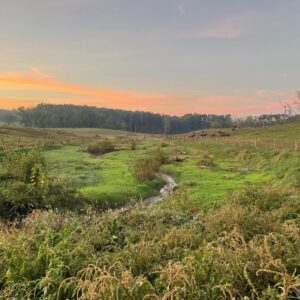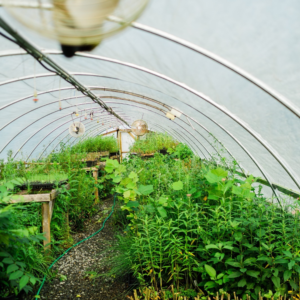I recently read a blog post by Seth Godin describing Led Zeppelin’s reflection on the audience’s reaction to the first live performance of Stairway to Heaven: “They were all bored to tears waiting to hear something they knew”
…They bombed. The audience wanted hits, not something new.
Every good idea starts as a new idea.
And new ideas are never familiar.
New ideas rarely hit a home run the first time they are shared. This example reminded me of the first time Ecotone suggested the North American beaver might be an effective tool in the restoration toolbox to improve water quality for the Chesapeake Bay. I shared a photo of the beaver as the last slide in a three-hour workshop at the Mid-Atlantic Stream Restoration workshop, held in Baltimore in the fall of 2016. The lead-in to the slide was a question to the cohort of government regulatory folks, stream restoration practitioners, ecologists, and engineers involved in ecological restoration:
How would you facilitate the restoration of our waterways and the Bay if you didn’t have any money?
I remember being more nervous about that last slide than any other part of the workshop. The idea was provocative, controversial, and definitely contrarian for the attendees at the time. The response was a mix of skepticism, humor, and nervousness that many perceived as a threat to the status quo. Back then there was one approach to stream restoration that dominated our thinking: locking in a meandering single thread channel bordered by a relatively dry and intermittently flooded floodplain. We call it “natural channel design.” Back then we thought that was the highest and best condition we could engineer. Beaver were regularly trapped out of new restoration projects and were viewed as a nuisance jeopardizing the project’s “success.” Fast forward five years and I and many others are busily trying to evolve this thinking.
Honoring and leveraging the ecosystem services of the North American beaver is not a new idea. Indigenous tribes across the continent have long recognized beaver in stories and cultures. In many tribes, hunting beaver is considered taboo– just as we hold dogs in high regard and have constructed laws to protect dogs, indigenous tribes such as the Cheyenne, Blackfoot, and Comanche formed a set of customs reflecting the importance of the beaver. Their cultures recognized the beaver’s valuable role in the landscape, damming streams, slowing water flow and creating ponds and habitat for fish, and how their survival depends on these features. While lucrative, many of these tribes never entered the European fur trade as it went against their values.
We have come a long way since 2016. When I talk to groups about ecological restoration, the cackles and beaver jokes are not as prevalent. In the first week of March in 2020, Ecotone and the Beaver Institute held the first beaver centric international conference of its kind, BeaverCon, in Hunt Valley, Maryland. BeaverCon 2022 is just a few months away. The Bay Journal just released a new film, Water’s Way: Thinking Like a Watershed, which suggests that beaver and using nature to restore nature is an idea worth embracing in Chesapeake Bay restoration.
In this mindset, Ecotone recently constructed its first beaver dam analogue project in Washington County, Maryland, where 65 structures that look and function like actual beaver dams were installed, along with planting lots of beaver food like willow and box elder. Our “if you build it, they will come” design philosophy embraces “thinking like a beaver” as a way to entice beaver to colonize our restoration sites across the Mid-Atlantic, and we have seen almost 100% success in enticing beaver to our projects using this approach. We have also installed several dozen “flow management devices” across the Mid-Atlantic as an alternative to trapping beaver when their engineering blueprint clashes with ours, promoting a simple and cost-effective coexistence strategy. Honestly, when talking to groups generally unaware about the role beaver can play in our watershed restoration strategies, I have come to relish the cackles and laughter when first introducing the beaver message. To me, it means we can make significant progress and add more folks to the “Beaver Believer” camp as we move into the next phase of Bay restoration with climate change drawing into question so much about our current restoration practices. I am happy to see the North American beaver as a restoration partner moving from “new idea” to “good idea.”
Best,
Scott McGill
CEO


